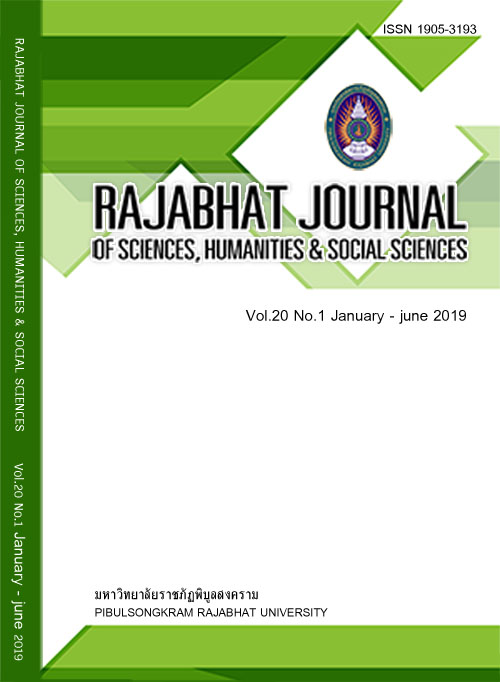EFFECT OF TEMPERATURE ON INHIBITION EFFICIENCY OF EUGENOL FOR COPPER CORROSION
Keywords:
temperature, inhibition efficiency, eugenol, copper corrosionAbstract
The effect of temperature on inhibition efficiency of eugenol for copper (Cu) corrosion was studied using the weight loss measurement, and scanning electron microscope (SEM). The corrosion of Cu has attracted much attention because Cu has been applied as raw material in various industries. Nowadays the popular method to prevent/reduce Cu corrosion is the addition of green corrosion inhibitor. In this work, eugenol, a natural fragrance and flavor extracted from plants, was applied as an eco-friendly corrosion inhibitor. Eugenol could be used to reduce the corrosion of Cu in the presence of 1 M HCl. However the inhibition efficiency of eugenol for Cu plates at 1 M HCl was found to decrease with increasing temperature from 30°C to 70°C. The data from the weight loss measurement corresponded with images from SEM. Eugenol was found to perform well as a corrosion inhibitor of Cu and also possibly provided another capability of Thai tradition herbs in this research.
References
Abiola OK, Otaigbe JOE, Kio OJ. Gossipium hirsutum L. extracts as green corrosion inhibitor for aluminium in NaOH solution, Corrosion Science. 2009; 51: 1879-1881.
Atsumi T, Fujisawa S, Tonosaki K. A comparative study of the antioxidant/peroxidant activities of eugenol and isoeugenol with various concentrations and oxidation conditions, Toxicology in Vitro. 2005; 19: 1025-1033.
Cheng SS, Liu JY, Chang EH, Chang ST. Antifungal activity of cinnamaldehyde and eugenol congeners against wood-rot fungi, Bioresource Technology. 2008; 99: 5145-5149.
El-Etre AY. Natural honey as corrosion inhibitor for metals and alloys. I. copper in neutral aqueous solution, Corrosion Science. 1998; 40: 1845-1850.
Finsgar M, Milosev I. Inhibition of copper corrosion by 1,2,3-benzotriazole: a review, Corrosion Science. 2010; 52: 2737-2749.
Ismail KM. Evaluation of cysteine as environmentally friendly corrosion inhibitor for copper in neutral and acidic chloride solutions, Electrochimica acta. 2007; 47: 4189-4194.
Jmiai A, Ibrahimi B, Tara A, Issami S, Jbara O, Bazzi L. Alginate biopolymer as green corrosion inhibitor for copper in 1 M hydrochloric acid: Experiment and theoretical approaches, Journal of Molecular Structure. 2018; 1157: 408-417.
Ma H, Chen S, Niu L, Zhao S, Li S, Li D. Inhibition of copper corrosion by several Schiff bases in aerated halide solutions, Journal of Applied Electrochemistry. 2002; 32: 65-72.
Ostovari A, Hoseinieh SM, Peikari M, Shadizadeh SR, Hashemi SJ. Corrosion inhibition of mild steel in 1 M HCl solution by henna and its constituents (lawsone, gallic acid, a-D-glucose and tannic acid), Corrosion Science. 2009; 51: 1935-1949.
Özcan M, Solmaz R, Kardas G, Dehri I. Adsorption properties of barbiturates as green corrosion inhibitors on mild steel in phosphoric acid, Colloids and Surfaces. 2008; 325: 57-63.
Ramesh S, Rajeswari S. Corrosion inhibition of mild steel in neutral aqueous solution by new triazole derivatives, Electrochimica acta. 2004; 49: 811-820.
Rao PS, Navinchandra S, Jayaveera KN. HPTLC analysis of the essential oil from Pimenta dioica leaf, Journal of Applied Pharmaceutical Science. 2012; 2(12): 141-148.
Rocca E, Bertrand G, Rapin C, Labrune JC. Inhibition of copper aqueous corrosion by non-toxic linear sodium heptanoate: mechanism and ECAFM study, Journal of Electroanalytical Chemistry. 2001; 503: 133-140.
Shimodal K, Kondo Y, Nishida T, Hamada H, Nakajima N. Biotransformation of thymol, carvacrol, and eugenol by cultured cells of Eucalyptus perriniana, Phytochemistry. 2006; 67: 2256-2261.
Souza FS, Snelli A. Caffeic acid as a green corrosion inhibitor for mild steel, Corrosion Science. 2009; 51: 642-649.
Stupišek-Lisac E, Gazivoda A, Modžarac M. Evaluation of non-toxic corrosion inhibitors for copper in sulphuric acid, Electrochimica Acta. 2002; 47: 4189-4194.
Teanpaisan R, Kawsud P, Pahumunto N. Screening for antibacterial and antibiofilm activity in Thai medicinal plant extracts against oral microorganisms, Journal of Traditional and Complementay Medicine. 2017; 7: 172-177.
Wang L. Inhibition of mild steel corrosion in phosphoric acid solution by triazole derivatives, Corrosion Science. 2006; 48: 608-616.
Zhang R, Kulkarni KA, Kulkarni AP. Oxidation of eugenol by purified human term placental peroxidase, Placenta. 2000; 21(2-3): 234-240.
Downloads
Published
How to Cite
Issue
Section
License
Each article is copyrighted © by its author(s) and is published under license from the author(s).










